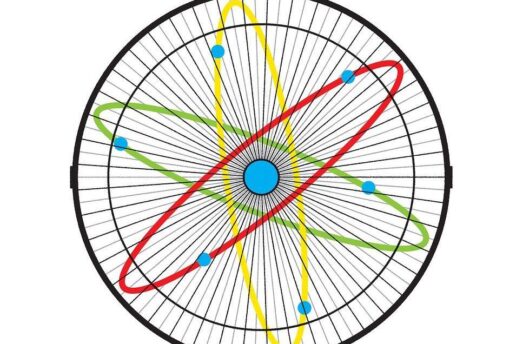
The Physics of Keeping Things Cool
Extremely low temperatures may be the key to new breakthroughs in computing.
Modern cooling technology shapes our lives in many ways. Refrigeration gives us access to food from all over the world, in and out of season; air-conditioning turns homes and cars into places of refuge from sweltering summers. These are big improvements over the time-honored method of using ice, which used to be mined on an industrial scale. Fresh Pond in Cambridge, Mass., where I often take walks, was once an ice mine.
Putting something on ice to cool it is straightforward physics. Since energy flows downhill from a higher-energy state to a lower-energy one, heat is transferred from a warm object to the cold ice, causing the former to become cooler and the latter to melt. More advanced methods of cooling are harder, because they require pumping energy out of a body to keep it cooler than its surroundings. Paradoxically, this can only be done by investing energy, as well as taking advantage of the laws of thermodynamics. Reasonably cheap energy, plus some brilliant engineering, doomed the ice industry.
Extremely low temperature is still a major discovery zone in physics. It is where quantum mechanics comes into its own. The distinguishing feature of quantum mechanics is that energy comes in discrete units. To see the effects of this discreteness, you’ve got to keep the number of units small: There’s no qualitative difference between 1,000,002 and 1,000,003 units of energy, but there is between two and three units. Ultracold materials are energy-starved, allowing the strange laws of quantum mechanics to work their magic.
Close to absolute zero, many metals and some other substances suddenly become superconductors. Electric currents flow through superconductors smoothly, without friction, so that it takes little or no energy to maintain them. Among many other applications, that beautiful fact makes it possible to create the powerful electromagnets used in magnetic resonance imaging (MRI). Similarly, liquid helium becomes a superfluid at low temperature, able to transport heat without friction. This makes it ideal for low-temperature refrigerators, and superfluid helium is the workhorse of cryogenics.
Information processing is another active frontier of low-temperature physics. The heat generated by modern computers, which are powered by electric currents, is a major limitation on computing technology. Researchers are working on ways to transfer data without generating heat, using “supercurrents” of information flow.
In addition, many important problems in computing, such as finding efficient distribution networks or airline routing systems, can be thought of in terms of making things cold. Whenever a problem is posed digitally, both the question and the potential answers are long strings of zeros and ones. These binary numbers can be translated into physical systems: Zero and one can become the “off” and “on” positions for a switch, or “spin up” and “spin down” for an electron.
This kind of physical programming allows us to map questions and answers into states of physical systems, where the most efficient solution will be the one that contains the least heat.
The multifaceted problem of refrigeration, at high or low temperatures, in natural or engineered environments, continues to challenge human ingenuity. There are strong incentives to invent new kinds of ice and air-conditioners— refreshing things to envision during my long summer swims.
Originally appeared on July 16, 2020 on The Wall Street Journal website as ‘The Physics of Keeping Things Cool’
Frank Wilczek is the Herman Feshbach Professor of Physics at MIT, winner of the 2004 Nobel Prize in Physics, and author of the books Fundamentals: Ten Keys to Reality (2021), A Beautiful Question: Finding Nature’s Deep Design (2015), and The Lightness of Being: Mass, Ether, and the Unification of Forces (2009).